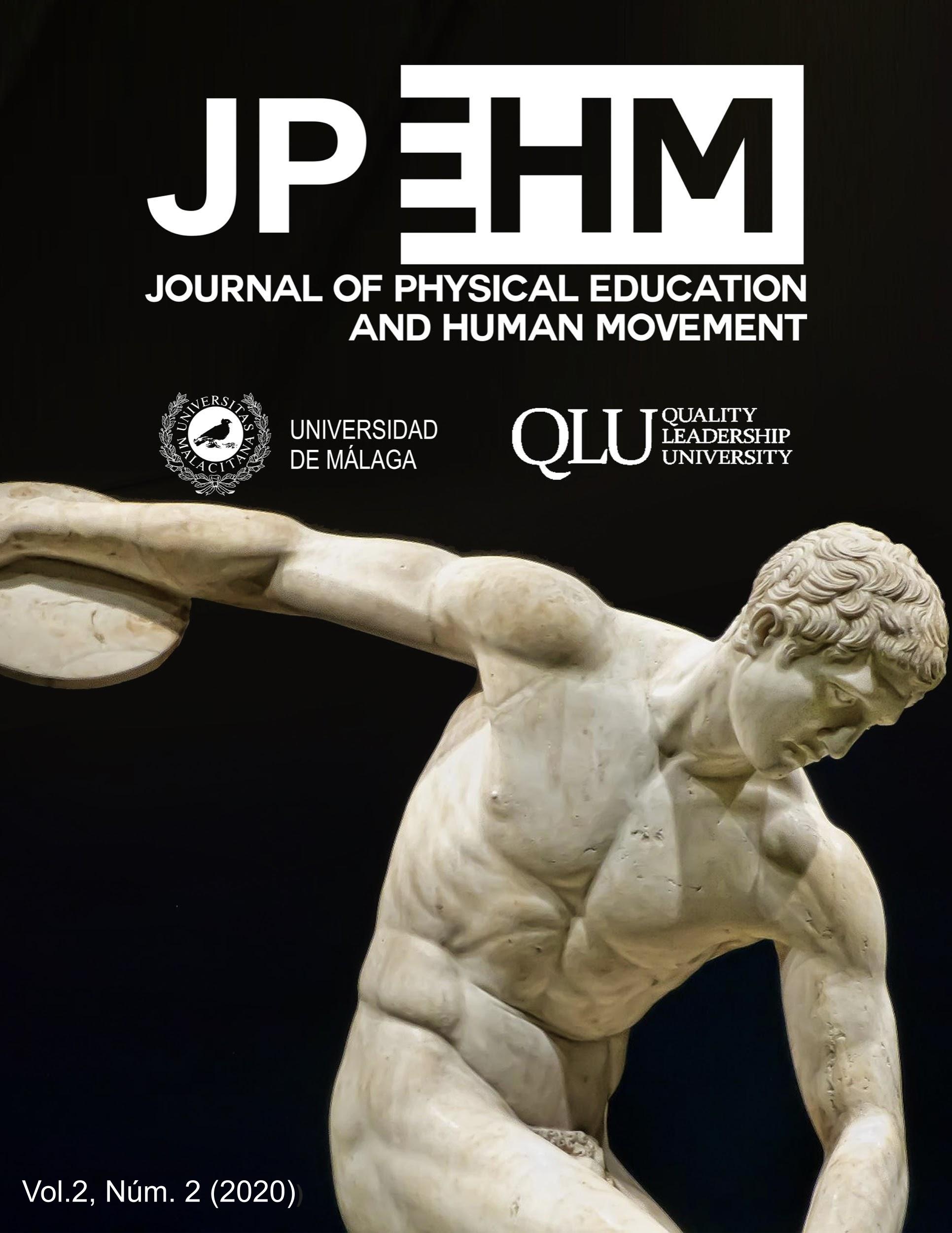Effects of increased inspiratory demand on postural stability in the elderly
DOI:
https://doi.org/10.24310/JPEHMjpehmjpehm.v2i27788Keywords:
inspiratory muscles, Biodex Balance System, elderlyAbstract
Introduction: Aging can cause physiological and functional changes, and these, in turn, can lead to a decline in functions and functional capacity, and thus generate a compromise in autonomy and mobility, and increase the risk of falls. Aging is also associated with biological changes that compromise inspiratory muscle function. There are studies that have shown that all trunk muscles work together with the function of protecting the spine and preserving postural control, including the inspiratory muscles, however, the role of the diaphragm in breathing always takes precedence over postural function. Objective: To verify the influence of the increase in the inspiratory demand on the postural stability of the elderly, through a case study. Methods: Three elderly individuals initially performed the assessment of maximal inspiratory pressure (PImax), and then underwent a postural stability test. In the Biodex Balance System SD equipment, they performed the protocol of the device itself called 'Postural Stability Test' (PST), in order to evaluate the instability index in two different conditions. In the first condition, the elderly performed the test and could breathe normally, without exerting themselves and trying to keep themselves balanced on the equipment platform; in the second condition, the elderly were evaluated by breathing through the Power Breathe® equipment and using a nose clip. To achieve this condition of increase in inspiratory demand, an overload of 50% of the MIP value, evaluated at the beginning, was adopted. Results: In the anterior-posterior oscillations, all the elderly showed a higher index of instability in the test with increased inspiratory demand and for the right-left oscillations, two of the elderly evaluated presented a higher index of instability in this condition. Conclusion: The increase in inspiratory demand provided by the Power Breathe® device was able to change the balance of the elderly, increasing the postural instability of those evaluated. We consider that for more enlightening results it is necessary to carry out a randomized and controlled study with a larger sample.
Downloads
Metrics
References
Britto, R. R., Zampa, C. C., De Oliveira, T. A., Prado, L. F., & Parreira, V. F. (2009). Effects of the aging process on respiratory function. Gerontology, 55(5), 505-510.
Caserotti, P. (2010). Strength training in older adults: changes in mechanical muscle function and functional performance. The Open Sports Sciences Journal, 3(1), 62-66.
Cho, K. H., Lee, K. J., & Song, C. H. (2012). Virtual-reality balance training with a video-game system improves dynamic balance in chronic stroke patients. The Tohoku journal of experimental medicine, 228(1), 69-74.
Enright, P. L., Kronmal, R. A., Manolio, T. A., Schenker, M. B., & Hyatt, R. E. (1994). Respiratory muscle strength in the elderly. Correlates and reference values. Cardiovascular Health Study Research Group. American journal of respiratory and critical care medicine, 149(2), 430-438.
Granacher, U., Gollhofer, A., Hortobágyi, T., Kressig, R. W., & Muehlbauer, T. (2013). The importance of trunk muscle strength for balance, functional performance, and fall prevention in seniors: a systematic review. Sports medicine, 43(7), 627-641.
Hodges, P. W., Eriksson, A. M., Shirley, D., & Gandevia, S. C. (2005). Intra-abdominal pressure increases stiffness of the lumbar spine. Journal of biomechanics, 38(9), 1873-1880.
Hodges, P. W., Gandevia, S. C. (2000). Activation of the human diaphragm during a repetitive postural task. The Journal of physiology, 522(1), 165-175.
Hodges, P. W., Gurfinkel, V. S., Brumagne, S., Smith, T. C., & Cordo, P. C. (2002). Coexistence of stability and mobility in postural control: evidence from postural compensation for respiration. Experimental brain research, 144(3), 293-302.
Hodges, P. W., Gurfinkel, V. S., Brumagne, S., Smith, T. C., & Cordo, P. C. (2002). Coexistence of stability and mobility in postural control: evidence from postural compensation for respiration. Experimental Brain Research, 144(3), 293-302.
IBGE – Instituto brasileiro de geografia e estatística. Em Estimativas de Projeção da população. Projeções 1980-2050. Disponível em < https://www.ibge.gov.br/estatisticas/sociais/populacao/9109-projecao-da-populacao.html?=&t=resultados> el 03 de janeiro de 2020.
Janssens, L., Troosters, T., McConnell, A., Pijnenburg, M., Claeys, K., Goossens, N., ... & Brumagne, S. (2014). Inspiratory muscle training improves proprioceptive postural control and sit-to-stand-to-sit in individuals with recurrent non-specific low back pain. In International Society of Posture & Gait Research congress, Date: 2014/06/29-2014/07/03, Location: Vancouver.
Santos, F. H. D., Andrade, V. M., & Bueno, O. F. A. (2009). Envelhecimento: um processo multifatorial. Psicologia em estudo, 14(1), 3-10.
Studenski, S., et al. (2011). Gait speed and survival in older adults. Jama, 305(1), 50-58.
Downloads
Published
How to Cite
Issue
Section
License
Aquellos autores/as que tengan publicaciones con esta revista, aceptan los términos siguientes:
- Los autores/as conservarán sus derechos de autor y garantizarán a la revista el derecho de primera publicación de su obra, el cuál estará simultáneamente sujeto a la Licencia de reconocimiento de Creative Commons que permite a terceros compartir la obra siempre que se indique su autor y su primera publicación esta revista.
- Los autores/as podrán adoptar otros acuerdos de licencia no exclusiva de distribución de la versión de la obra publicada (p. ej.: depositarla en un archivo telemático institucional o publicarla en un volumen monográfico) siempre que se indique la publicación inicial en esta revista.
- Se permite y recomienda a los autores/as difundir su obra a través de Internet (p. ej.: en archivos telemáticos institucionales o en su página web) antes y durante el proceso de envío, lo cual puede producir intercambios interesantes y aumentar las citas de la obra publicada. (Véase El efecto del acceso abierto).







15.png)
